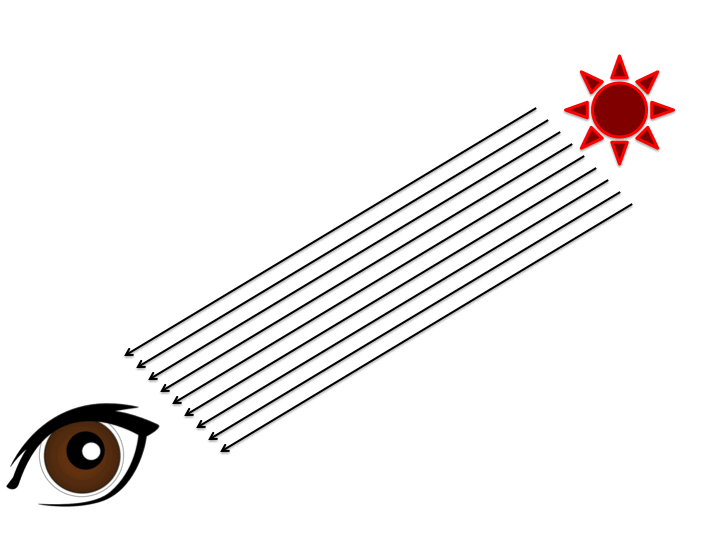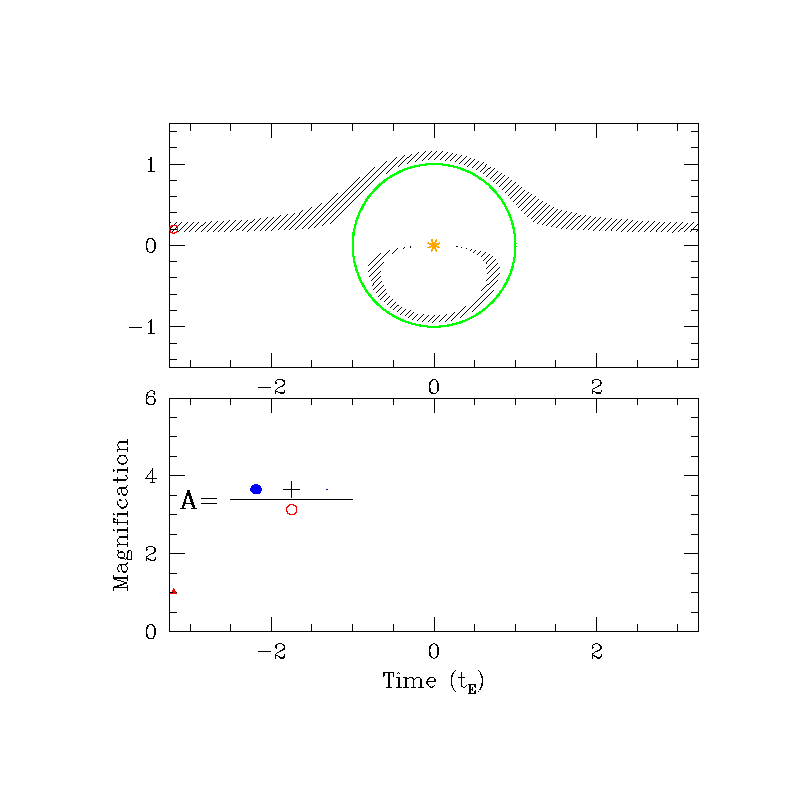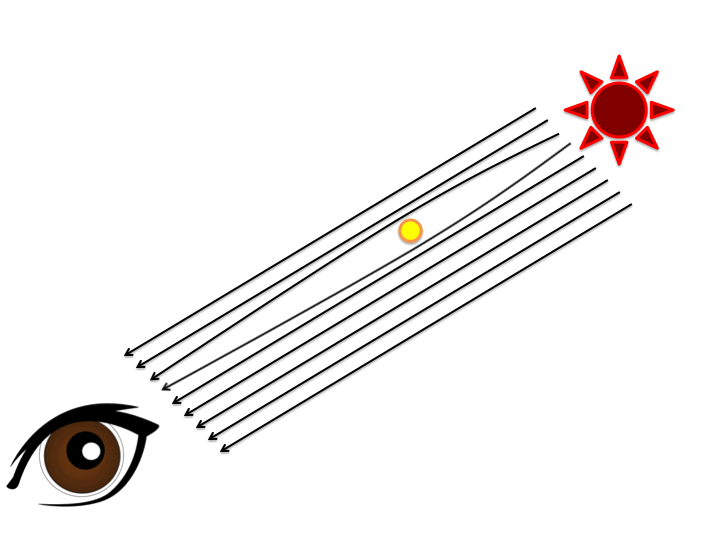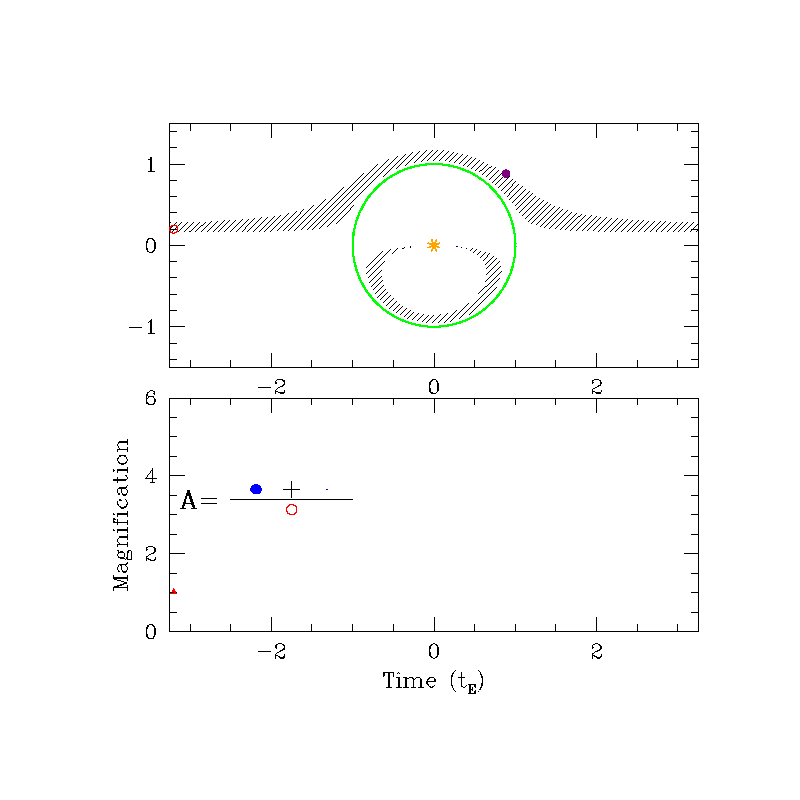
Normally, light from a distant star travels to us in a straight line. This star is called the "source." But if another star passes between us and the more distant star, its gravity will deflect the light from the distant star. Because it bends light, we call the intermediate star the "lens." If the deflection is strong enough, the distant star appears to be two stars. These are called "images" of the distant star.

In the animation below, the source star moves behind the lens star. As it does so, the images of the source change as a function of time. The bottom panel shows the measured magnification of the source star's light as a function of time.

If the lens star is orbited by a planet, the planet will further deflect the light from the source star.

We can detect the planet by measuring the magnification curve and observing the small bump it produces:
